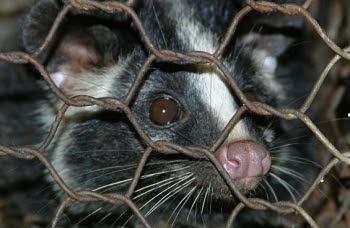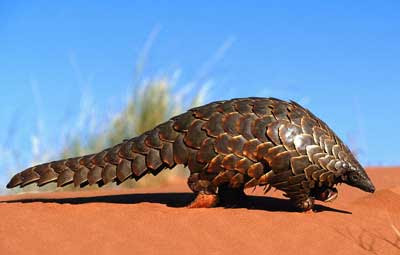BY CHRISTOPHER O'DONNELL
WIMAUMA -- First there's a deep purring that even from 10 yards away can be felt in the belly.
Then a snarl, and suddenly 300 pounds of teeth, fur and muscle bound up to the wire fence at alarming speed.
The show of aggression ends with the Siberian-Bengal mix tiger coming to a halt next to Robin Greenwood so it can gently nuzzle her hand.
"How are you doing today, boy?" Greenwood coos to the tiger.
Greenwood, 50, heads up Elmira's Wildlife Sanctuary in Wimauma. The little-known animal sanctuary a few miles north of the Manatee-Hillsborough border provides a home to lions, tigers, leopards and cougars. It is a place where bears, lemurs, parrots and other exotic animals will live out their days.
The sanctuary, which recently opened its doors to the public, is the last chance for many of its inhabitants.
The big cats came from sanctuaries that shut down or from private collectors for whom the animals became too difficult to handle.
Wild cats are most valuable in their first year, when as cute cubs they draw crowds to zoos and can be handled by the public, said Scott Lope, director of operations at Big Cat Rescue in Tampa.
But the animals, which can live for upward of 20 years, are often unwanted after that.
Big Cat Rescue cares for about 130 wild cats and fields about 100 calls a year from people trying to unload tigers, lions, bobcats and other exotics.
"They grow up very quickly," Lope said. "They're dangerous, scary animals, and there's no place for these animals to go once they have outlived their usefulness."
That is where places like Elmira's come in.
The sanctuary opened in 1998 when Greenwood's husband, Ted, and his close friend David Kitchen heard about a lion and tiger that no one wanted.
Kitchen, who ran a tropical fish farm, already kept two bears on land he owned east of U.S. 301. It seemed like a natural solution to take the animals.
What started as a single gesture of kindness just kept growing.
They took in animals like Juno, an American timber wolf, from a sanctuary that was downsizing. Then there was Richard the cockatoo, whom Greenwood describes as "the noisiest bird on earth," whose squawking was too loud for his owners.
The sanctuary now has more than 25 animals, and that is not counting the geese, turkeys, swans, peacocks and guinea hens that run wild on the property.
"More animals needed a home, and he kept bringing them in," said Robin Greenwood, of her husband, who died in 2006.
To the outsider, Elmira's might look like it has an identity crisis.
The brown sign at the entrance says "Dodge City." Dotted amid animals that would normally grace the African savanna are a collection of faux Wild West buildings.
The tigers prowl around an enclosure beside a small wooden chapel. The leopard cages are next to The Cooler, a bar with mounted fish and deer heads on the walls and space for a livestock auction in the back.
The Wild West theme was the idea of Kitchen, who died in June. He loved to throw parties in The Cooler.
The 28-acre sanctuary also has a wooden cantina and a small fort as a stockade. The ticket office is decked out as a livery store.
Operating Elmira's is a constant struggle for Greenwood and the 15 core volunteers at the sanctuary.
Casper, the sanctuary's male lion, eats seven chicken thighs or legs per day. In all, the big cats consume about 100 pounds of meat per day.
The monthly food bill comes to about $2,500. Elmira's also has to pay veterinary costs and pay for volunteers to keep current Class I licenses to own wild animals.
Volunteers also have to replace worn fences and cages.
For many years, the sanctuary was bankrolled by Kitchen. But in 2005, faced with rising costs, the rescue incorporated as a nonprofit operation. The sanctuary's board is focused on making the shelter financially independent.
That goal spurred a decision to open to the public in March. People who visit the sanctuary get a tour of the facility and close-up views of the animals.
"It's just a slight drop in the bucket," Greenwood said of the $5 and $10 entry tickets. "Our expenses are going up fast."
Greenwood recently gave up her job working for Hillsborough County because she was spending so much time on grant applications and fundraising.
"Needless to say, I'm living on savings," she said. "There's just so much to do. The best part is taking care of the animals. The rest is stuff you have to do."
Source:
http://www.heraldtribune.com/article/20070827/NEWS/708270450




